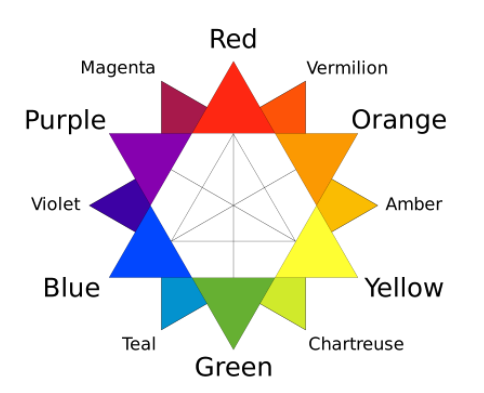Reflection of light waves
(A)nature and sources of light
Light is a wave, it is a visible form of energy. The light from the sun comes to us through radiation. Therefore light is a visible form of energy which is radiated outwards from a source.
Light is been produce in different ways either direct from its source or indirectly
Luminous objects: these are objects that produce their own light; e.g. the sun, stars, fireflies, glow worms, lamps, candles, electric light bulbs, etc.
Non-luminous objects (opaque): these are objects that do not produce their own light, they are only seen when light from other sources falls on them and is reflected back into our eyes.e.g star, moon.
(B)rectilinear propagation of light
Rectilinear propagation of light is referred to as the phenomenon of light travelling in a straight line.
Rectilinear propagation of light
Source: www.commons.wikimedia.org
Formation of shadows and eclipses, are the two natural effects that result from the rectilinear propagation of light.
Shadows from a point source
Source: www.google.com
Eclipses: the sun produces its own light, and therefore, it is a luminous object. The earth and the moon are non luminous, or opaque objects. The moon is seen by means of the sunlight reflected from the moon’s surface.
Eclipse of the sun (solar eclipse): this takes place when the moon comes between the earth and the sun.
Eclipse of the sun
Source: www.commons.wikimedia.org
Annular eclipse of the sun: this occurs when the sun and the moon are in positions where the end rays intersect before reaching the earth. The sun is covered which later leave a bright ring round the edge.
Annular eclipse of the sun
Source: www.commons.wikimedia.org
Eclipse of the moon (lunar eclipse): this takes when the earth is between the sun and the moon. As a result of that, the Earth’s shadow falls upon the moon, then a partial or total eclipse is observed.
Eclipse of the moon
Source: www.commons.wikimedia.org
Note: the pin-hole camera is made up of a light-tight box, painted black, a small hole is made at one end with a pin or needle point.
The pin-hole camera
Source: www.commons.wikimedia.org
Magnification (m) of an image is defined as the ratio of the height of the image to the height of the object.
m = B’A’/ BA Thus,
image height/ Object height = Image distance/Object distance
Or m = length of camera/Object distance
(C) reflection of light from plane surfaces
When light strikes a surface it is absorbed, transmitted or reflected. The rays which strike the surface are referred to as incident rays while those that are thrown back from the surface are referred to as reflected rays.
Regular and irregular reflection
Source: www.toppr.com
Note: there are two types of reflection
- Regular
- Irregular reflection
Law of reflection
The laws states
- The incident ray, the reflected ray and the normal at the point of incidence all lie in the same plane.
- The angle of incidence is equal to the angle of reflection.
Terms in reflection of light
Parallax is the apparent relative movement of two aligned objects when they are not at the same distance from an observer perspective.
Lateral inversion stems from the fact that an object is perpendicularly opposite its image behind the mirror.
A virtual image is one which can not be formed on the screen.
While a real image is one which can be formed on the screen.
Note that the image in a plane mirror has the following characteristics: it is
- The same size as the object
- As far behind the mirror as the object is in front
- Laterally inverted
- Virtual
- Upright
A kaleidoscope is a tube in which two mirrors are fixed, inclined at an angle of 60°.
(D) reflection of light by curved mirrors
A curved surface could be produced by cutting out a part of a spherical shell. If light is reflected from the outside of this surface, a convex or diverging mirror is produced. If light is reflected from the inside surface, we have a concave or converging mirror. Such curved mirrors are called spherical mirrors.
Concave mirrors are used in torches and car head-lamps, in reflecting telescopes and also as shaving mirrors. While convex mirrors are often used as driving mirrors and to see round corners in supermarkets.
Convex mirror
Source: www.en.wikipedia.org
Concave mirror
Source: www.commons.wikimedia.org
The principal focus of a concave mirror is the point where rays that are parallel and close to the principal axis converge after reflection
Mirror formulae
Where v is positive u is positive, then f is also positive, therefore the mirror formula is given by:
1/f = 1/u + 1/v
And magnification m is given by
m = height of image/ Height of object
= Image distance from the mirror/ object distance from the mirror
= v/u
For the same concave mirror, if v is negative and u is positive and f is positive then. 1/f = 1/u – 1/v
Note that convex mirrors are used for driving mirrors, because this mirror always gives an erect image of an object behind the driver.
Magnification of an object in a mirror is defined as the number of times the image is bigger than the object.
m = height of image/ height of object
or m = image distance from mirror/ object distance from mirror
Focal length from measurement of the radius of curvature
Source: www.en.wikipedia.org
The focal length by use of the mirror formula is given by: 1/v + 1/u = 1/f
(E) refraction of light through a rectangular glass block
Source: www.flickr.com
Refraction through a rectangular glass prism
Source: www.commons.wikimedia.org
Real depth, apparent depth and refractive index
real depth/ apparent depth = refractive index
Refractive index of glass
Source: www.en.m.wikipedia.org
Refractive index of a liquid
Source: www.pxfuel.com
Laws of refraction
- The incident ray, the refractive ray and the normal at the point of incidence, all lie in the same plane.
- The ratio of the sine of the angle of incidence to the sine of the angle of refraction is a constant for a given pair of media.
If light travels from air to glass, the refractive index is given by;
ang = sin i (in air)/ sin r (in glass)
Or it could be expressed as;
Ang = velocity of light in air/ velocity of light in glass
(E) total internal reflection and critical angle
Total internal reflection
Source: www.commons.wikimedia.org
Critical angle is the incident angle at which the angle of refraction is 90° when light passes from denser to less dense medium.
Total internal reflection occurs when the critical angle is exceeded for light travelling from a dense to a less dense medium.
A fish eye view
(F) applications of totally reflecting prisms
Periscopes
Source: www.needpix.com
Prism binoculars
Source: www.flickr.com
(G) dispersion of white light and colour
Refraction of monochromatic light
Source: www.en.wikipedia.org
Pure spectrum
Source: www.flickr.com
Summary of mixed colour

Source: www.en.wikipedia.org
Mixing pigments
| Colour of object on which light is incident | Reflected Ray which one sees | Absorbed rays |
| Red | Red | Green, blue |
| Blue | Blue | Red, green |
| Green | Green | Red, blue |
| Cyan | Green, blue | Red |
| Magenta | Red, blue | Green |
| Yellow | Red, green | Blue |
Past questions
1.The real image of an object formed by a converging lens of focal length 15cm is three times the size of the object. Calculate the object distance. (Wassce 1999)
A. 60cm
B. 30cm
C. 20cm
D. 15cm
Answer: C
Solution: f= 15cm. M= 3 ~ v/u= 3
V = 3u; 1/f = 1/v + 1/u;. 1/15 = 1/3u + 1/u
= 1+3/ 3u ; 1/15=4/3u; u/3 = 4×15/3 = 20cm
2. A simple microscope forms an image 10cm from an eye close to the lens. If the object is 6cm from the eye, calculate the focal length of the lens. (Wassce 2000)
A. 3.75cm
B. 4.00cm
C. 15.00cm
D. 16.00cm
Answer: A
Solution: 1/u + 1/v = 1/f (Len formulae); 1/f = 1/10 + ⅙. 1/f = 3 + 5/30 ; 1/f = 8/30;
f = 30/8 = 3.75cm
3. To obtain a virtual, erect and magnified image from a converging lens, an object must be placed? (Wassce 2018)
A. Between the focus and the lens
B. The focus
C. Between the focus and twice the focal length
D. Beyond twice the focal length
Answer: A
4. A rainbow is formed when sunlight is incident on water droplets suspended in air due to. ( Wassce 2017)
A. Diffraction
B. Refraction
C. Dispersion
D. Interference
Answer: C
Solution: dispersion is a process whereby light are spread in different directions
5. A trough 12.0cm deep is filled with water of refractive index 4/3. By how much would a coin at the bottom of the trough appear to be displaced when viewed vertically from above the water surface? (Jamb 1991)
A. 3.0cm
B. 6.0cm
C. 9.0cm
D. 16.0cm
Answer: C
Solution: refractive index = real depth/apparent depth
Let the apparent depth = x
4/3 = 12/x;. 4x = 36;. x = 36/4 =9cm
6. The colours seen in this film of oil on the road and in soap bubbles are due to?
(Jamb 1997)
A. Reflection
B. Interference
C. Diffraction
D. Polarization
Answer: A
Solution: reflection has to do with the process of sending back light, sound and heat to the surface.
7. Total internal reflection occurs when light moves from? (Jamb 2000)
A. Air to water
B. Water to glass
C. A dense medium to a less dense medium
D. A less dense medium to a dense medium
Answer: C
8. The terrestrial telescope has one extra lens more than the astronomical telescope. The extra lens is for? (Jamb 2001)
A. Improving the sharpness
B. Creating an inverted image
C. Magnification of the image
D. Erection of the image
Answer: A

No Comments